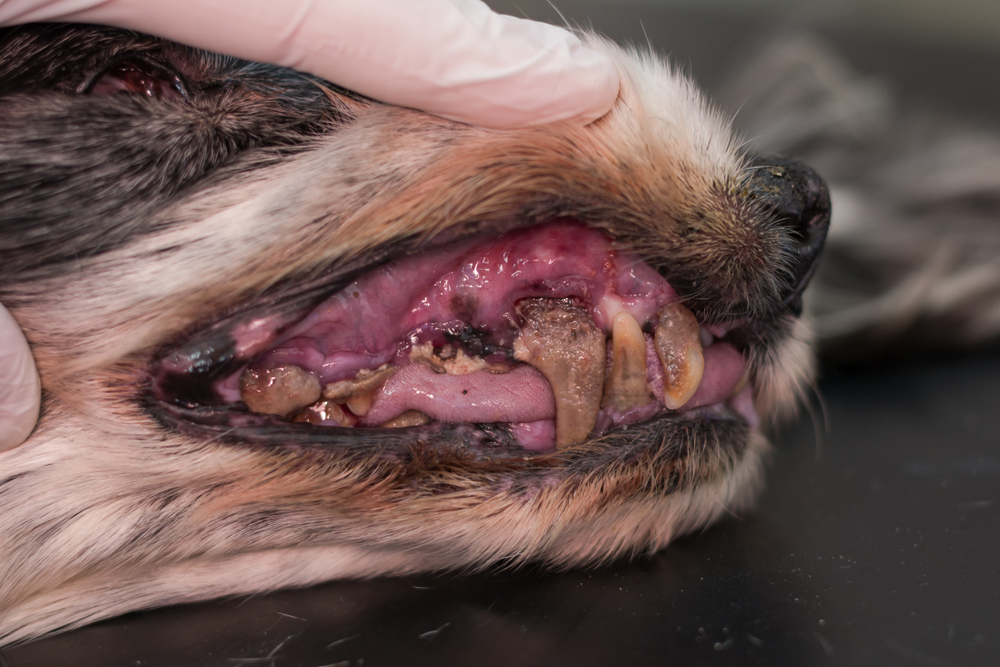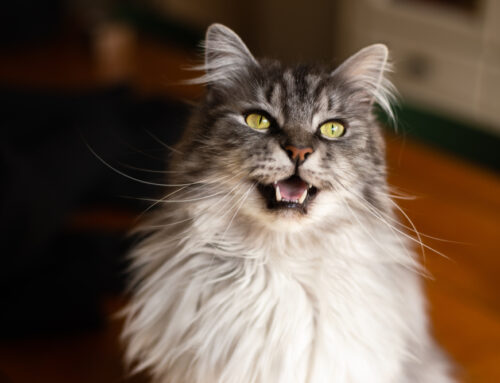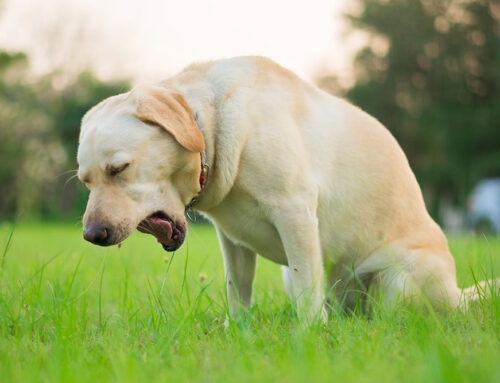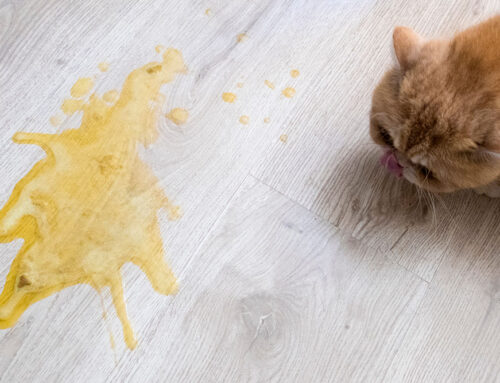Periodontal disease is the most commonly diagnosed dental disease in pets. Almost all pets have dental disease signs by age 3, and left unchecked, the problem will progress as the pet ages. The good news is that dental disease is largely preventable when pet owners learn how to properly care for their pet’s oral health. February is National Pet Dental Health Month, but any time is a great opportunity for Palisades Veterinary Hospital to answer your frequently asked questions about pet dental health.
Question: What is periodontal disease in pets?
Answer: Periodontal disease results from plaque buildup on teeth. Plaque is sticky and traps bacteria near the gumline, and over time hardens into tartar (i.e., calculus) that brushing can no longer easily remove. Tartar that is not periodically removed by your pet’s veterinarian will continue to build up, attracting more bacteria and causing gum inflammation that progresses to infection, tissue erosion, and—ultimately—bone and tooth loss.
Q: How can periodontal disease affect my pet’s overall health?
A: Periodontal disease can quickly progress from gingivitis to severe bone and tooth loss in some pets. Regardless of how quickly your pet’s periodontal disease progresses, the result is severe pain and a diminished quality of life. Because of constant oral pain, your pet will have difficulty completing normal daily activities, such as eating and playing. Bacterial infections deep in the gums can also seep into the bloodstream, where they can permanently damage the heart, liver, or kidneys.
Q: How do I know whether my pet has periodontal disease?
A: Your pet may not show obvious pain or disease signs in the initial dental disease stages, but your veterinarian can pick up on subtle signs during your pet’s annual wellness exam. If your pet has advanced dental disease, or is dealing with one or more painful teeth, you may notice:
- Drooling
- One-sided facial swelling
- Dropping food or chewing on one side
- Lost interest in toys and bones
- Bleeding gums
- Bad breath
Q: Are some pets more prone to periodontal disease than others?
A: Like people, some pets have won the dental health genetic jackpot, while others, unfortunately, not so much. The genetic disposition to dental disease varies by individual, but generally speaking, small-breed dogs have more problems than larger breeds, and breeds with extreme head shapes (e.g., flat-faced bulldogs, long-nosed greyhounds) have more problems than breeds with neutral head shapes. Cat dental health will vary based on individual genetics rather than breed or size.
Q: Should I brush my pet’s teeth?
A: Yes! Brushing, which prevents or slows dental disease progression, is the best way to remove plaque before it hardens into tartar. Use a pet-specific toothpaste in an appealing favor, such as chicken, fish, or mint, that is safe for your pet to swallow. Brushing is recommended daily for maximum benefit, but three times per week may be beneficial, as well.
Q: What can I do if my pet hates toothbrushing?
A: First, try to slowly acclimate them to toothbrushing. Consult your veterinarian or a trainer for instructions on keeping the experience positive. If these approaches are unsuccessful, or you are concerned that your pet may bite during brushing, an alternative dental product may be best. The Veterinary Oral Health Council (VOHC) endorses products that have been proven safe and effective for plaque removal, so choose one or several products and stick with them. Although not as effective as brushing, products such as chews, water additives, and dental diets will improve dental health when used consistently for an extended period.
Q: Should my pet receive a professional dental cleaning?
A: All pets require professional dental cleanings periodically throughout their lives. For pets with severe disease that progresses quickly, cleanings may be recommended once or twice per year. Pets with minimal disease may need a cleaning only every few years. During a professional dental cleaning, your anesthetized pet undergoes:
- Dental X-rays — Each tooth is individually X-rayed to examine the root structure and surrounding bone. Most dental diseases (e.g., bone loss or root abscess) are discovered on X-ray.
- Scaling — Tartar is removed above and below the gum line from all teeth.
- Polishing — Polishing smooths the teeth after scaling, leaving a plaque-repellent surface.
- Oral examination — Your veterinarian checks gum pocket depth and examines the health of each tooth. Examination findings are compared with X-rays to determine necessary treatments.
- Treatments — Loose, fractured, or otherwise diseased teeth typically are extracted, to remove the source of pain and infection, and to allow the diseased area to heal. This helps prevent disease from spreading to surrounding teeth.
Q: Why is anesthesia required for a veterinary dental cleaning?

A: Most dental disease develops below the gum line, and cannot be detected easily on a conscious oral examination—a true oral examination is only possible while your pet is anesthetized. Your pet cannot quietly endure keeping their mouth open wide for extended periods so that we can snap X-rays, probe the gumline, or extract teeth. Without anesthesia, veterinary dentistry would be stressful, unsafe, and ineffective, as most problems would go undiscovered and untreated.
Keeping your pet’s mouth healthy and pain-free is key to their overall wellbeing. If you suspect your pet has dental disease, have questions regarding your pet’s oral care, or would like to schedule your pet’s next dental exam or cleaning, call us to schedule a visit with your Palisades Veterinary Hospital team.








Leave A Comment